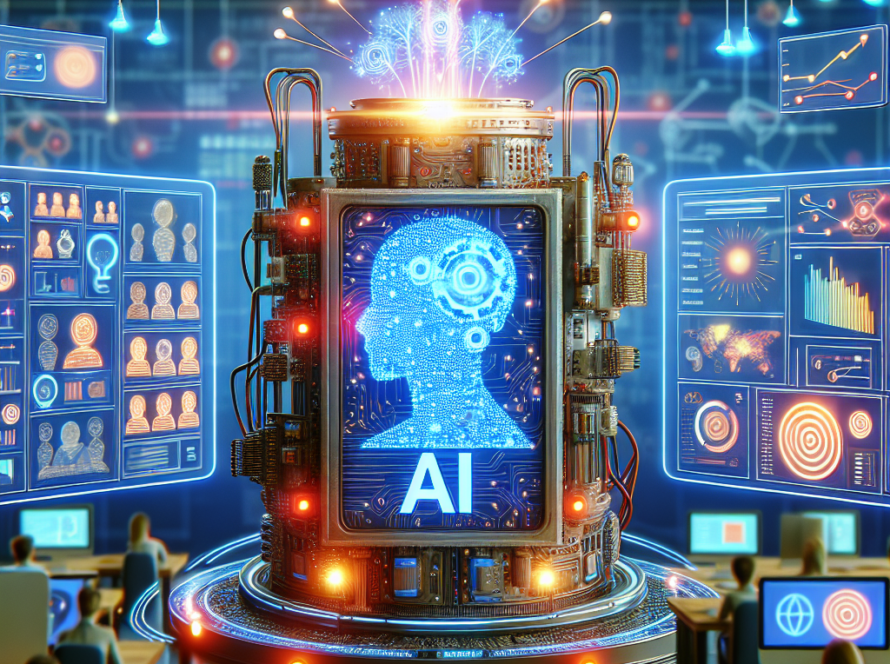The advent of artificial intelligence (AI) has ushered in a new epoch for medium-sized businesses, presenting a myriad of opportunities to enhance operations and drive growth. However, navigating the intricate process of integrating AI into departmental workflows can be daunting. This is where the expertise of AI consultants becomes invaluable. They serve as navigators through the complexities of custom AI deployment, ensuring that business process automation with AI is not just a buzzword but a tangible reality.
Understanding Business Needs
Initial Consultation and Requirement Gathering
The journey towards successful AI implementation strategies begins with an initial consultation between the business leaders and AI consultants. This stage is crucial as it sets the foundation for a tailored approach to medium business AI integration. The consultants delve deep into understanding what makes your business tick – its core values, customer base, competitive landscape, and long-term vision.
In these sessions, every detail matters; from current pain points to aspirational goals. It’s akin to piecing together a complex puzzle – each piece representing different facets of your business needs and expectations from departmental AI solutions.
Identifying Key Business Objectives
Once the groundwork has been laid out in terms of understanding your unique business context, the focus shifts towards identifying key objectives that will guide the AI integration process. Whether it’s optimizing workflows through AI or harnessing data-driven decision-making capabilities, setting clear targets is paramount.
This stage isn’t just about listing desirable outcomes; it’s about prioritizing them based on their potential impact on your organization’s performance. It’s like setting waypoints on a map for an expedition – knowing where you want to go helps in charting out the most efficient path forward.
Assessing Current Technological Capabilities
A thorough assessment of your existing technological infrastructure is pivotal before any talk of machine learning in departments or enhancing operations with AI can proceed. Consultants need to understand what tools are currently at play within your systems and how they might interact (or clash) with new technologies.
This assessment isn’t merely technical; it’s strategic too. It involves discerning whether current systems support scalability and adaptability – qualities essential for future-proofing your business against an ever-evolving technological landscape.
Data Collection and Preparation
Data Audit and Inventory
AI thrives on data – it’s its lifeblood. Therefore, conducting a comprehensive data audit is one of the first steps that consultants undertake post-assessment phase. Like librarians meticulously cataloguing books, consultants inventory datasets available across different departments within your organization.
This meticulous process ensures that all potential sources of data are accounted for before moving onto subsequent stages such as cleaning or preprocessing which are vital for custom AI deployment success.
Data Cleaning and Preprocessing
The adage ‘garbage in, garbage out’ couldn’t be more apt when discussing data preparation for AI projects. Data often comes messy – replete with inaccuracies, inconsistencies, and missing values that could derail any well-intentioned algorithm if left unchecked.
Cleaning this digital detritus requires both precision and patience; it’s about refining raw input into high-quality information ready for analysis by sophisticated machine learning models designed to optimize workflows through AI integration within various departments.
Establishing Data Governance Policies
Prior to diving headfirst into model building or algorithm training lies another critical step: establishing robust data governance policies. These guidelines serve as guardrails ensuring ethical use and secure management of collected information throughout its lifecycle within an enterprise’s ecosystem.
In crafting these policies, considerations range from compliance with regulatory frameworks such as GDPR or HIPAA to internal protocols around access control or encryption standards – all aimed at safeguarding one’s most valuable asset in today’s economy: data.
In summary, laying down solid foundations through understanding business needs coupled with meticulous data collection and preparation paves the way for seamless integration of smart technologies into medium-sized enterprises’ daily operations. As we continue exploring how artificial intelligence revolutionizes departments across medium businesses under guidance from skilled consultants who tailor strategies specifically suited to individual company profiles – remember that each step taken now forms part of larger narrative shaping future success stories powered by intelligent automation solutions. Stay tuned as we delve deeper into choosing suitable tools tailored precisely according to unique requirements next!
Choosing the Right AI Tools
Evaluating Available AI Technologies
In today’s market there’s no shortage of tools claiming transformative powers thanks to artificial intelligence. However, not every shiny new software package will be right for your business’s unique needs. That’s why an essential role of the AI consultant lies in evaluating these technologies critically.
This evaluation isn’t just about features; it’s about alignment with business objectives identified earlier in our journey together. Consultants draw upon their expertise to assess each tool’s capabilities against specific use cases within your organization – whether it’s enhancing customer service with chatbots or improving supply chain efficiency through predictive analytics.
Selecting Tools Based on Business Requirements
Once potential technologies have been evaluated against business goals, choosing the right set becomes easier but still requires careful consideration. The selection process takes into account factors such as ease of integration with existing systems (which we’ll explore further shortly), scalability as your business grows or evolves over time as well as cost implications associated with both acquisition and long-term operation.
A critical aspect here is ensuring chosen solutions are not just powerful but also practical – offering intuitive interfaces that won’t require extensive training or cause disruption during adoption phases within departments across your medium-sized enterprise.
Cost-Benefit Analysis of Different AI Solutions
A thorough cost-benefit analysis helps demystify financial implications surrounding different options under consideration by quantifying expected returns relative to investment costs involved in implementing them within your organization’s ecosystem. This analysis extends beyond upfront expenses; it looks at maintenance costs over time alongside projected gains from increased efficiency or revenue growth stemming directly from leveraging advanced analytics capabilities enabled by selected tools. By methodically breaking down these numbers side-by-side comparisons become clearer helping inform strategic decision-making processes ultimately leading towards informed choices best suited towards achieving desired outcomes laid out at outset stages during initial consultations between you – leaders driving change forward – alongside expert guides steering ship safely towards shores marked ‘innovation’ on maps charting future courses powered by intelligent technology solutions tailored specifically around requirements unique unto yourselves.
Employee Training and Change Management
Designing Comprehensive Training Programs
The integration of AI into a medium business is not just a technological shift but also a cultural one. AI consultants understand this and place significant emphasis on designing comprehensive training programs for employees. These programs are tailored to the specific tools and processes being implemented, ensuring that all staff members, from front-line workers to executives, are equipped with the knowledge needed to leverage new AI capabilities effectively.
Training may include workshops that provide hands-on experience with new systems or online modules that allow employees to learn at their own pace. The objective is clear: empower every member of the organization with the confidence and competence to use AI-enhanced tools as part of their daily workflow.
Workshops and Hands-On Training Sessions
Workshops serve as interactive platforms where employees can familiarize themselves with AI applications through practical exercises. These sessions often simulate real-world scenarios, allowing staff to see firsthand how AI can streamline tasks in their respective roles. It’s an opportunity for immediate feedback and troubleshooting, fostering a learning environment that encourages questions and collaborative problem-solving.
Online Learning Modules
In today’s digital age, flexibility in learning is crucial. Online modules complement in-person workshops by providing resources accessible anytime, anywhere. This allows employees who need more time to grasp new concepts or those who prefer self-paced learning to do so without pressure. Moreover, these modules can be updated continuously to reflect the latest advancements in AI technology or changes within the company’s processes.
Continuous Learning Opportunities
AI is ever-evolving; thus, training cannot be a one-off event. Continuous learning opportunities are essential for keeping up with technological progressions. Consultants help businesses establish ongoing education initiatives such as regular update sessions, access to industry webinars, or subscriptions to relevant publications. This commitment ensures that the workforce remains agile and informed – key traits for thriving in an environment shaped by rapid technological change.
Monitoring and Maintenance
Setting Up Performance Metrics
To ensure that AI systems deliver value consistently over time, consultants assist businesses in establishing clear performance metrics aligned with strategic objectives outlined earlier in the implementation process. These metrics serve as benchmarks for evaluating whether the deployed solutions are meeting expectations – from improving customer satisfaction scores through personalized interactions powered by AI to reducing operational costs via automation.
Detailed KPIs (Key Performance Indicators) might include metrics such as response times for customer inquiries handled by chatbots or error rates in automated reporting functions – each chosen based on relevance to overall business goals.
Regular System Audits
Akin to routine health check-ups, regular system audits are vital for maintaining optimal performance of AI implementations. Consultants schedule periodic reviews of system outputs against established KPIs to identify areas where adjustments may be necessary – whether tweaking algorithms for better accuracy or expanding datasets used for machine learning models.
Audits also encompass assessing any technical issues that might arise from software updates or integration challenges with other enterprise systems – ensuring smooth operations without disruptive downtime.



